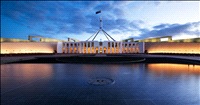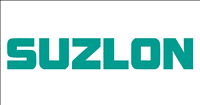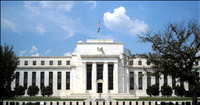US research spend to decline despite Obama promise
23 Jan 2009
As research and development budgets take a beating in these economically depressed times, US President Barak Obama's inauguration promise to "restore science to its rightful place" may take a while to fulfill. For the first time in a decade, total R&D funding in the US is forecast to drop by an inflation-adjusted figure of 1.6 per cent in 2009. Elsewhere in the world, spending is expected to be flat, according to a recent report.
 R&D spending in the US in 2009 will reach $383.5 billion, according to the December 2008 report prepared jointly by Battelle - a Columbus, Ohio-based science and technology company - and R&D Magazine. While that number is up 1.75 percent from $377 billion in 2008, real spending has declined by 1.6 per cent after adjusting for inflation.
R&D spending in the US in 2009 will reach $383.5 billion, according to the December 2008 report prepared jointly by Battelle - a Columbus, Ohio-based science and technology company - and R&D Magazine. While that number is up 1.75 percent from $377 billion in 2008, real spending has declined by 1.6 per cent after adjusting for inflation.
Accounting for a large proportion of the US drop is an expected 2.9 per cent cut in federal support and a 1.3 per cent decrease in industrial funding in inflation-adjusted dollars. The report assumes a recession of at least 12 months.
Global R&D funding is expected to increase by about 3.2 per cent in current dollars, but is flat when adjusted for inflation, said Jules Duga, a senior research scientist at Battelle and a co-author of the report.
Some exceptions to the flat growth, he said, are hotbeds such as the BRIC countries – Brazil, Russia, India and China. Certain sectors are growing well in Europe, such as communications in Scandinavian countries and pharmaceuticals in Switzerland, the UK and Germany.
The report foresees more global R&D collaborations in the future. "Europe and other areas will continue to look to the US for partnering relationships due to the high quality R&D," Duga said. "The development of further relationships between US and non-US companies is a growth area."
Multinational companies are spending a significant portion of their R&D budgets outside the countries in which they are headquartered. This might appear to be a loss of jobs, intellectual property, and influence for the home countries, but innovation spending seems to be flowing in both directions.
For example, in 2007 countries in the Americas spent $46.4 billion in R&D in Europe, the Middle East and Africa, while those countries in return spent $28.9 billion in the Americas, according to numbers from the consultants Booz & Company.
The Americas spent $27.8 billion in Asia-Pacific nations, while those countries spent $19.2 billion in the Americas. About 40 per cent of R&D funding in the US comes from companies headquartered in foreign locations. And the evidence is that companies that invest in multinational innovation are getting better returns on their R&D investments than companies that keep their laboratories exclusively at home.
"I think we are seeing a funding future that is a reflection of the world's current economy," Duga said. "We all are intertwined and everyone is linked in some way to the fundamental importance of R&D."
Three main issues will hit US R&D spending: a tighter federal budget; industry apprehension and general recession concerns; and global competition. The US federal budget problems will affect the amount of discretionary spending dedicated to US research, regardless of its merit; while rapidly changing business conditions will affect industrial R&D spending.
Need for 'double hits': Although President Obama stresses the importance of a strong and growing R&D base, it is expected that near-term expenditures will be influenced by the existing federal budget. The budget for the fiscal year 2010 will be the first chance for the new administration to set goals to continue and initiate operations in major R&D areas.
But there may be a short-term boost to R&D from the proposed Obama economic stimulus package. The US House of Representatives' version of the bill released on January 15 contains a recommended $13.3 billion in R&D funding. The proposed bill requires all funding to be awarded within 120 days of the president signing the bill into law.
According to an analysis by the American Association for the Advancement of Science of the proposed additional spending, the National Science Foundation would get an extra $3 billion (in 2008 its total budget was $6 billion). Of that, $2 billion would go to research grants and $200 million would restart the Academic Research Infrastructure programme, dormant since 1996, for competitively awarded university laboratory construction grants.
The National Institutes of Health would get an extra $3.9 billion (in 2008 its total budget was $29.5 billion).
Duga feels the stimulus package, which would help enhance the estimates in his report, should address the long-term need for basic and applied science and development work. "It's a good idea if it's done in a rational manner over five or ten years, or whatever they want, so there are long-term programmes to engender further investment in research," he said.
Earlier there were calls by the US House science and technology committee, which oversees federal technology investments, for research with dual benefits: job creation in the short term and productivity improvements for the US in the long term.
"In stimulating the economy, double hits, or 'twofers', have to be the priority," Congressman Bart Gordon said in mid-December when announcing the legislative agenda and priorities for the committee, which he chairs.
According to the Battelle report, real domestic industrial R&D spending in general will slow down in the near future. But there are some bright spots. Battelle predict that industry's support of academic research and offshore R&D is likely to increase slightly.
India, China forge ahead: The report forecasts that global R&D spending will reach $1,140 billion in 2009, up 3.2 per cent in real terms over 2008, but flat when adjusted for inflation. Asia still is expanding, although global effects have slowed R&D growth there as well.
Other countries will continue to move into what historically has been American turf. In medical advances and defence applications, the US is the acknowledged world leader. But in technologies related to renewable energy, telecommunications and advanced electronics, the US either is not perceived as a world leader or will lose its leadership position in the next five years, according to the report.
China and India are continuing to grow as major players in the world's R&D efforts. Accelerated programmes in South Korea, Singapore, and other Asian countries have influenced the R&D 'balance of trade' with the US.
However, the Organisation for Economic Co-operation and Development has said China must put in place a number of policy issues before it becomes a sustained world player in R&D, including moving to a more innovation-driven growth model, building an enterprise-centred national innovation system and strengthening innovation governance.
Japan is the second-largest R&D spender in the world, but will soon be surpassed by China, according to the report.
US funding patterns: The US government is predicted to spend $99 billion on R&D in 2009. Of that amount, $24.9 billion will go to government laboratories, $24.6 billion to industry, $29.8 billion to academia, $14.27 billion to federally funded R&D centres and $5.55 billion to non-profit institutions.
Industry, which is the largest contributor to R&D, will contribute $252.8 billion to industrial research and development and $3 billion to academia, while non-profit outfits will get $1.6 billion.
Academia and other non-profit organisations will just about equally share the money left from other US R&D funding. About $10.6 billion will be derived from academia's own funds, and another $3.3 billion will come from state and local governments. Non-profit institutions will provide $10.1 billion.
Thrust areas for research: A few hot technologies drawing the focus of R&D funding include renewable energy systems, nuclear energy systems, and wind turbine systems, which are expected to get a boost from the continuing economic and political pressure for greater US energy independence. President Obama has made climate change a priority and has said some of the 2.5 million jobs he wants to create by early 2011 will be in renewable energy.
Biotechnology is overtaking conventional chemical-based pharmaceuticals, and big pharma companies may fund small biotech firms to get products to fill their pipelines, the report said. Development of clean water supplies, sustainable processes and low-cost transportation systems will be other areas of focus in the coming year.
The report concludes that R&D spending will be a work in progress, with unforeseen changes affecting the amount of money available, and much of that hinging on the eventual price of oil.














.jpg)















